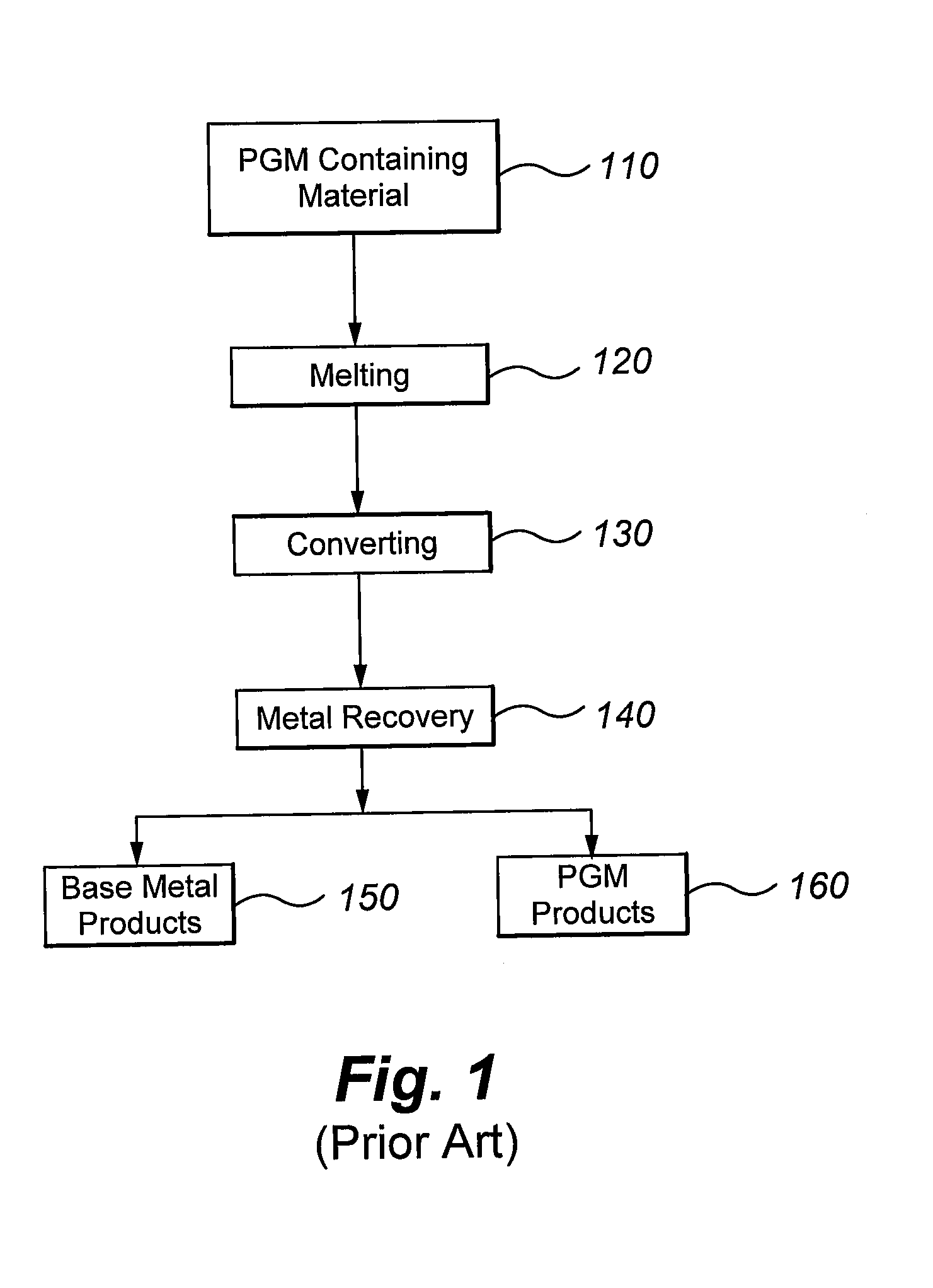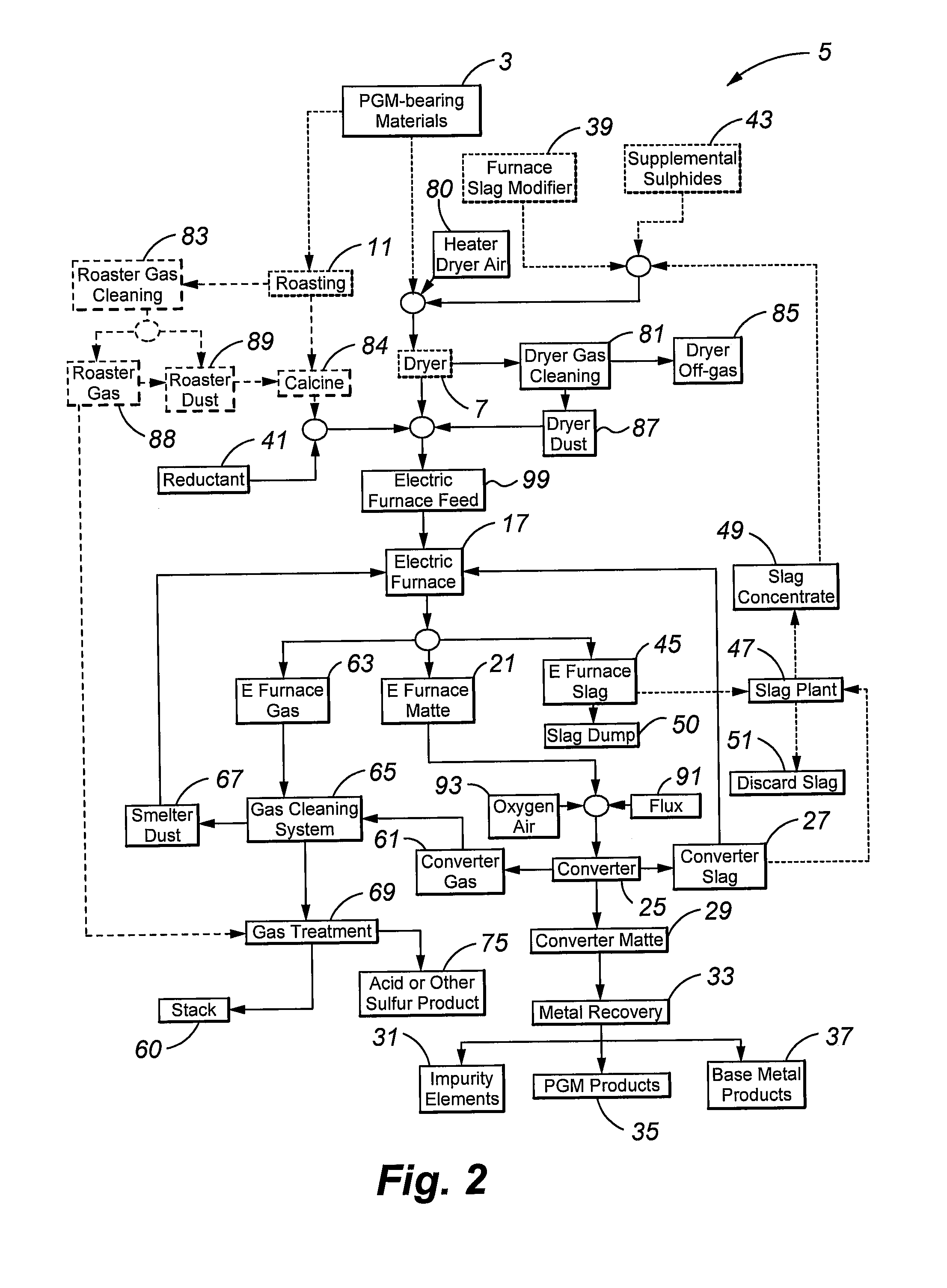Process for recovering platinum group metals using reductants
a reductant and platinum group technology, applied in the field of platinum group and base metalcontaining materials recovery processes, can solve the problems of reducing the effective working volume of the furnace crucible, reducing the time available for phase separation and settling of the matte, and difficult to achieve clean separation in the presence of trivalent metals, etc., to achieve the effect of enhancing undesirable mass and thermal flux, increasing the melt or liquidus temperature of the matte, and high nickel-to-copper ratio
- Summary
- Abstract
- Description
- Claims
- Application Information
AI Technical Summary
Benefits of technology
Problems solved by technology
Method used
Image
Examples
Embodiment Construction
[0023]The present invention provides an improved pyrometallurgical process for recovering platinum group metals from a PGM-bearing material, specifically an improved process for recovering PGM metals from PGM-bearing materials containing chromium, and, more specifically, PGM-bearing materials containing chromium in the form of chromium (III) oxide. The PGM-bearing material can include oxide, siliceous, and / or sulfur-bearing minerals, run-of-the mine material, or a partially or fully processed material, such as a flotation concentrate, leaching residue or tailings, or recycled industrial matter, spoil, or waste and mixtures thereof.
[0024]FIG. 2 is a flow chart according to an embodiment of the present invention. Referring to FIG. 2, a PGM-bearing material 3 containing a substantial amount of water (0.5 wt % or higher) may undergo an optional drying 7 stage to remove most of the water, thereby reducing the thermal load on the electric furnace. A heated dryer air 80 is passed through t...
PUM
| Property | Measurement | Unit |
|---|---|---|
| Temperature | aaaaa | aaaaa |
| Temperature | aaaaa | aaaaa |
| Temperature | aaaaa | aaaaa |
Abstract
Description
Claims
Application Information
 Login to View More
Login to View More - R&D
- Intellectual Property
- Life Sciences
- Materials
- Tech Scout
- Unparalleled Data Quality
- Higher Quality Content
- 60% Fewer Hallucinations
Browse by: Latest US Patents, China's latest patents, Technical Efficacy Thesaurus, Application Domain, Technology Topic, Popular Technical Reports.
© 2025 PatSnap. All rights reserved.Legal|Privacy policy|Modern Slavery Act Transparency Statement|Sitemap|About US| Contact US: help@patsnap.com



